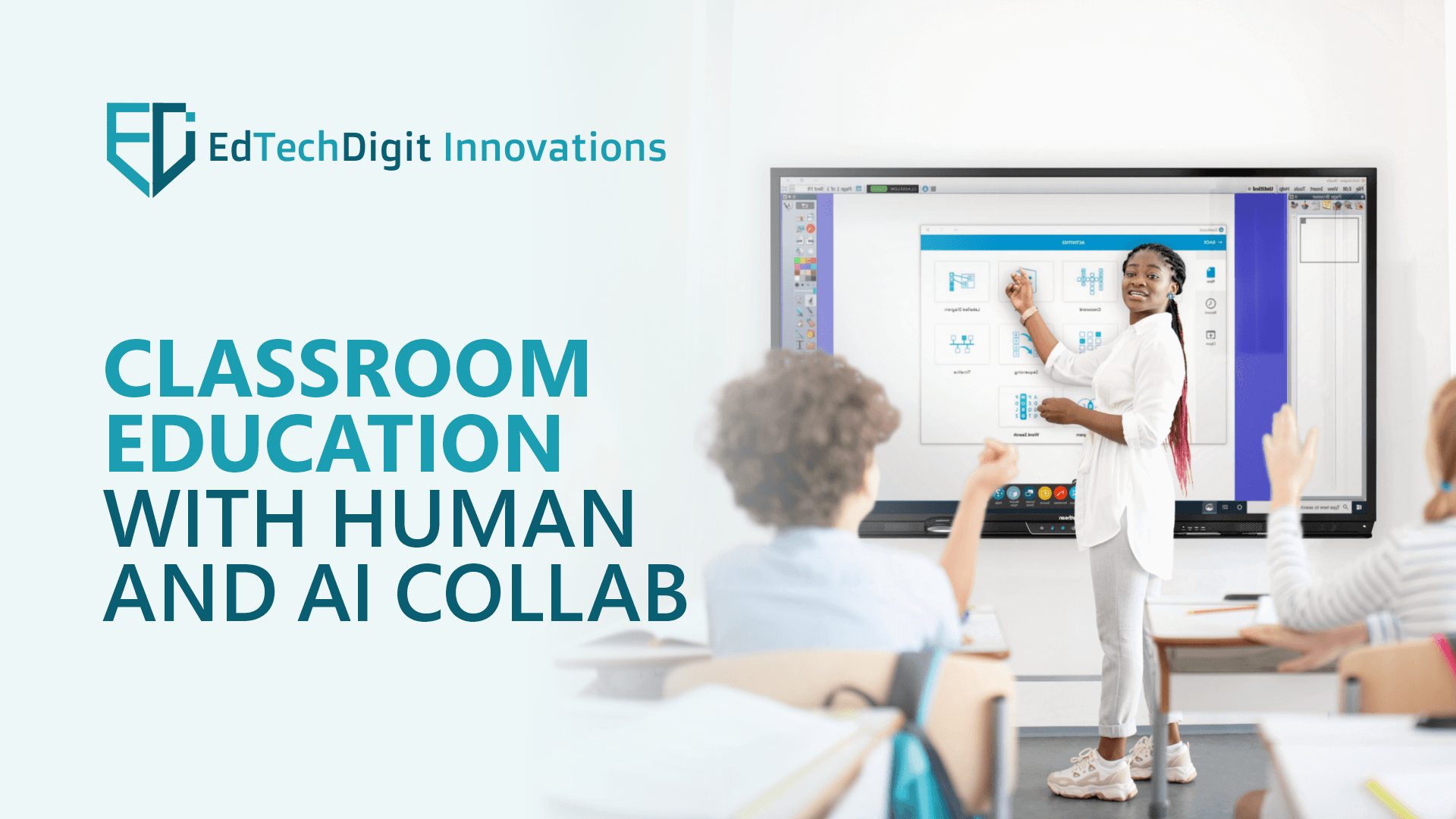One of the greatest applications of artificial intelligence technology is in the education sector. From enhancing the learning and teaching experience to streamlining administrative tasks, the use of AI in education is huge. As technology advances, we must also acknowledge its transformative potential and embrace it to make education better and more fun.
According to WEF, 71% of teachers and 65% of students believe AI tools are important for students’ success in college or even at work. This doesn’t mean AI is going to replace teachers or other staff completely. An effective collaboration between teachers and technology is what will define the future of AI in education, by empowering teachers, making them more efficient, freeing up their precious time from mundane and repetitive tasks, and supporting innovation.
Therefore, the primary focus of educational institutions must now be to invest in the best EdTech technologies, infrastructure, and promote AI and human teacher collaboration. They need to offer teachers the best AI training and ensure their students get access to the best of technologies for their education.
Now, let us proceed further to understand how leveraging AI and collaborating it with expertise of human teachers will transform education.
Human-AI Collaboration in Education
Technology is not a new thing in education. Every new technology that comes into the world brings with it huge benefits for the education sector. The same is true for artificial intelligence as well.
With technologies evolving rapidly and the education industry seeing changes faster than ever, today, the role of AI as well as human teachers is very important. They both bring their own set of strengths and weaknesses to the classroom.
While the use of AI in the classroom can easily offer a consistent and personalized learning experience, human teachers can bring emotional intelligence and a more personal connection with the students.
The next section highlights the strengths and weaknesses of both human teachers and AI in education.
AI in Education
The integration of AI in education offers huge benefits as well as poses some serious challenges. Here are a few applications of AI worth considering.
- Artificial intelligence can analyze huge amounts of student data and personalize course content, pace of the course, its difficulty, etc., to ensure effective student learning
- It can be used to provide customized feedback and support, just like a virtual tutor
- Smart AI tools can automate assignment tasks, check, and grade them by themselves, thus freeing up teacher time
- Institutes can use AI to understand areas of improvement and design a curriculum
- AI-powered tools and technology can make learning easier, for example text-to-speech AI feature can help diverse learners
- AI can automate repetitive tasks like attendance, scheduling, and report generation
Benefits and Disadvantages of Using AI for Education
Using AI offers several benefits to students and teachers. AI can easily adapt to individual student needs and understand their learning styles for effective personalization. It can provide support to a large number of students, demonstrating its scalability potential. Moreover, it is not influenced by emotions or bias, so it can reduce bias in grading and assessment.
On the other hand, it has some disadvantages as well. Though a lack of emotion helps reduce bias, a lack of emotional intelligence cannot replace empathy and social-emotional support that human teachers need for students. They are subjected to bias in AI algorithms that can further exaggerate bias in the real world. Also, the cost of developing and deploying AI in the classroom can be expensive.
Role of Human Teachers
AI or any other technology can never replace human teachers in their job, as their role is highly important in providing more personal and effective learning. They can provide better emotional intelligence, encourage social interaction, and help students develop critical thinking.
They can easily adapt to students’ needs, offer personalized mentorship, and provide better ethical guidance.
But being human, of course, there are chances of errors, and they are prone to fatigue and efficiency issues. The quality of teaching can be inconsistent, and providing individual assistance to a large class of students can be challenging.
Apart from this, teachers can also face biases, loaded with administrative burdens, have limited resources and knowledge, and can burnout. This is why collaboration of AI and human teachers can prove to be an efficient solution.
AI-Human Teacher Collaboration – The Best Solution for Modern-day Education!
Squirrel AI is a hybrid education company and offers users a large adaptive model learning system. It has improved student question accuracy rates to 98%, up from 78%. Carnegie Learning’s Mathia is also a similar example.
To sum up, the future of AI in education largely depends on how effectively educational institutes adopt an AI-human collaborative approach for their education. While AI will look after the repetitive, mundane, and large-scale tasks like automation, personalization, and adaptive learning, it will be the responsibility of human teachers to power innovation, creativity, and foster social engagement. This collaboration will bring a truly transformative education system that will serve the future that the world needs.

